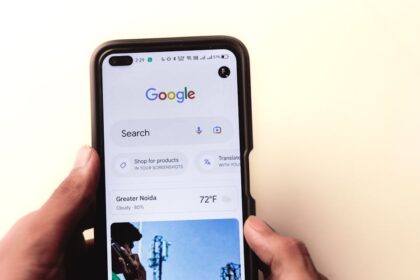Building a Mobile-First SEO Strategy from Scratch
Mobile-first indexing represents a fundamental shift in how search engines, primarily Google, crawl, index, and rank websites. Instead of relying on the desktop version of a site for evaluating content and performance, Google’s algorithms now predominantly use the mobile version. This paradigm shift means that if your mobile site is not optimized, it directly impacts your visibility and rankings, regardless of how well your desktop site performs. Developing a mobile-first SEO strategy from the ground up requires a comprehensive understanding of this indexing model, coupled with meticulous attention to technical SEO, content adaptation, user experience, and ongoing analysis, all centered around the mobile user.
Understanding Mobile-First Indexing and its Implications
Mobile-first indexing is Google’s initiative to use the mobile version of your website for indexing and ranking. Historically, Google’s crawlers predominantly used the desktop version of a site to understand its content and evaluate its quality. However, with the proliferation of mobile device usage surpassing desktop, Google recognized the need to align its indexing process with how most users access the internet. This transition began in 2016 and became the default for all new websites in 2019, with a complete rollout for all sites by 2021. For existing sites, Google notifies webmasters via Search Console when their site is switched to mobile-first indexing. The core implication is profound: if your mobile site lacks certain content, is slow, or provides a poor user experience, Google will perceive your entire website, across all devices, as less valuable.
The implications for SEO are far-reaching. Firstly, the content present on your mobile site is what Google considers canonical. If your desktop version has extensive, well-optimized content, but your mobile version has a truncated or simplified version, the desktop content will effectively be ignored for ranking purposes. This extends beyond text to images, videos, and structured data. Secondly, the technical performance of your mobile site, particularly its speed and responsiveness, becomes paramount. Factors like Core Web Vitals (Largest Contentful Paint, First Input Delay, Cumulative Layout Shift) are evaluated based on the mobile experience. A slow mobile site directly translates to lower rankings. Thirdly, mobile usability and overall user experience on mobile devices are crucial. Elements like legible font sizes, appropriately sized tap targets, and the absence of intrusive interstitials are not just user-friendly features but direct ranking signals. The mobile-first index mandates that your mobile site is not merely an afterthought or a stripped-down version, but the primary, fully-featured, and optimized representation of your online presence. Ignoring this fundamental shift means building your SEO strategy on a crumbling foundation, leading to diminished organic visibility and traffic.
Foundational Technical SEO for Mobile-First
Technical SEO forms the bedrock of any successful mobile-first strategy. It ensures that search engine crawlers can efficiently access, understand, and index your mobile content, while also providing a superior experience for mobile users.
Responsive Web Design: The Absolute Cornerstone
Responsive Web Design (RWD) is the most recommended approach for mobile-first SEO. It means your website adapts its layout and content dynamically based on the screen size and orientation of the user’s device. Instead of creating separate mobile versions (like m.example.com) or using dynamic serving (which serves different HTML/CSS based on user-agent detection), RWD uses a single codebase and URL structure. This simplifies management, eliminates duplicate content issues, and streamlines the crawling process for search engines.
- Why RWD over other approaches? Separate
m.dotsites often suffer from content parity issues (mobile site has less content), require complex rel=canonical and rel=alternate annotations, and can divide link equity. Dynamic serving, while flexible, requires careful implementation to avoid cloaking issues where different content is served to users versus crawlers. RWD ensures that Googlebot, which increasingly crawls as a smartphone user-agent, sees the exact same content and experience as a human mobile user. - Implementation Details: RWD is primarily achieved through CSS Media Queries, which apply different styles based on screen width, height, resolution, and orientation. Flexible grids and images (using
max-width: 100%) ensure content scales fluidly. - Testing Responsiveness: Crucial tools include Google’s Mobile-Friendly Test (which provides a simple pass/fail and rendering screenshot), and Chrome DevTools. In DevTools, use the “Toggle device toolbar” (Ctrl+Shift+M or Cmd+Option+M) to simulate various mobile devices, screen resolutions, and network conditions. This allows you to visually inspect layout, element sizes, and content flow across different breakpoints. Verify that all content, including text, images, videos, and interactive elements, is accessible and well-formatted on smaller screens.
Page Speed Optimization (Core Web Vitals – Mobile Focus)
Mobile users expect immediate gratification. Slow-loading pages lead to high bounce rates and negatively impact rankings, as page speed is a direct ranking factor for mobile. Core Web Vitals (CWV) are Google’s key metrics for assessing user experience related to page load speed, responsiveness, and visual stability, all of which are measured from a mobile perspective.
- Largest Contentful Paint (LCP): Measures the time it takes for the largest content element (image, video, or block of text) in the viewport to become visible. For mobile, this often means optimizing the hero section images or primary textual content. Strategies include:
- Image Optimization: Use modern image formats like WebP or AVIF. Compress images without losing quality. Implement responsive images (using
srcsetandsizesattributes) to serve appropriately sized images for different screen resolutions. Lazy loading images (deferring loading of off-screen images) is critical for LCP. - Minification: Reduce file sizes of CSS, JavaScript, and HTML by removing unnecessary characters (whitespace, comments).
- Leveraging Browser Caching: Configure server-side caching and browser caching to store static assets, reducing load times for returning visitors.
- Server Response Time: Optimize your server infrastructure, choose a reliable hosting provider, and utilize Content Delivery Networks (CDNs) to reduce latency for users geographically distant from your server.
- Preload critical resources: Use
for fonts or stylesheets essential for the initial render.
- Image Optimization: Use modern image formats like WebP or AVIF. Compress images without losing quality. Implement responsive images (using
- First Input Delay (FID): Measures the time from when a user first interacts with a page (e.g., clicks a button, taps a link) to when the browser is actually able to respond to that interaction. High FID often indicates heavy JavaScript execution blocking the main thread.
- Minimize JavaScript execution: Defer non-critical JavaScript. Break up long-running tasks into smaller chunks. Use web workers for complex computations.
- Remove unused JavaScript/CSS: Audit your code and eliminate assets that are not actively used.
- Cumulative Layout Shift (CLS): Measures the unexpected shifting of visual page content as it loads. CLS is frustrating for users, especially on mobile where unintentional taps can occur.
- Specify dimensions for images/videos: Always include
widthandheightattributes to reserve space for media, preventing layout shifts when they load. - Preload fonts and use
font-display: swap: Prevent “Flash of Unstyled Text” (FOUT) or “Flash of Invisible Text” (FOIT) by ensuring custom fonts don’t cause layout shifts. - Avoid inserting content above existing content: Dynamically injected content (like ads or banners) without reserved space often causes layout shifts.
- Specify dimensions for images/videos: Always include
- Tools for Speed Optimization: Google PageSpeed Insights provides detailed CWV scores and actionable recommendations. Lighthouse (built into Chrome DevTools) offers similar insights. GTmetrix and WebPageTest provide comprehensive waterfall charts and performance metrics, helping identify bottlenecks.
Mobile Usability and User Experience (UX)
Beyond technical speed, how easy and pleasant your mobile site is to use significantly impacts both user engagement and search rankings.
- Touch Targets: Ensure interactive elements (buttons, links, form fields) are large enough and have sufficient spacing around them for easy tapping with a finger, preventing accidental clicks on adjacent elements. Google recommends a minimum tap target size of 48×48 CSS pixels.
- Legible Font Sizes: Text must be easily readable without requiring pinching or zooming. Use responsive font sizes (e.g.,
em,rem,vwunits) that scale appropriately. Google recommends a base font size of at least 16px. - Viewport Configuration: Crucial for responsive design. The
tag in theof your HTML tells browsers to render the page at the device’s screen width and set the initial zoom level. Without it, mobile browsers might render the page at a desktop width, making it tiny and unreadable. - Avoid Intrusive Interstitials: Pop-ups that block content, especially on mobile, are a major deterrent. Google penalizes sites using intrusive interstitials that prevent users from accessing content immediately upon arrival from search results. This excludes legally required cookie consents or login prompts.
- Finger-Friendly Navigation: Simplify menus for mobile. Use hamburger menus or accordions effectively. Ensure navigation elements are accessible with a single thumb.
- Content Readability: Break up large blocks of text with headings, subheadings, bullet points, and short paragraphs. Use sufficient line height and paragraph spacing.
- Schema Markup for Mobile: Structured data helps search engines understand the context of your content, leading to rich snippets that stand out on mobile SERPs with limited screen real estate. Implement relevant schema types like LocalBusiness, Product, Review, FAQ, HowTo, and Article. Use Google’s Rich Results Test to validate your schema implementation.
Canonicalization and Hreflang (for complex setups)
While RWD eliminates most canonicalization issues, if you operate with separate mobile and desktop URLs (e.g., m.example.com and www.example.com), proper canonical tags are essential.
- Canonical Tags: On the desktop page, include
. On the mobile page, includeand. This tells Google the relationship between the two versions and which URL is preferred for indexing. - Hreflang: For sites targeting multiple languages or regions,
hreflangtags specify the language and geographical targeting of content. Ensurehreflangannotations are correctly implemented on both desktop and mobile versions if they exist, or on the single responsive version, pointing to the correct localized mobile URLs.
XML Sitemaps and Robots.txt (Mobile Considerations)
Ensure your robots.txt file does not disallow crawling of critical CSS, JavaScript, or images that define your mobile site’s layout and functionality. Google needs to access these resources to fully render and understand your page. Your XML sitemap should include all relevant mobile URLs. If you have a responsive site, your single sitemap is sufficient. If you use separate mobile URLs, ensure both desktop and mobile URLs are listed in respective sitemaps or clearly associated.
Mobile Keyword Research and Content Strategy
Mobile search behavior differs significantly from desktop, driven by context, urgency, and the nature of interaction. Your keyword research and content strategy must reflect these nuances to capture mobile-first opportunities.
Understanding Mobile Search Intent
Mobile users often have different intents compared to desktop users. They are frequently “on-the-go,” seeking immediate answers, local information, or solutions to urgent problems.
- Voice Search Queries: Mobile devices are primary interfaces for voice assistants. Voice queries tend to be longer, more conversational, and natural language. Instead of “pizza NYC,” a voice query might be “Where can I find the best pizza in New York City near me right now?” Optimize for long-tail keywords, question-based queries, and natural language phrases.
- Local Search: A vast proportion of mobile searches have local intent. Users look for businesses, directions, opening hours, and contact information. Keywords include “near me,” “open now,” “directions to,” and specific service + location combinations (e.g., “plumber Brooklyn”).
- Quick Answers/Snippets: Mobile users often seek direct answers. Optimizing for featured snippets, Knowledge Panel entries, and “People Also Ask” boxes can significantly increase mobile visibility. This requires concise, authoritative answers to common questions.
- App-Related Queries: If your business has a mobile app, users might search for app downloads, app features, or information accessible only via the app. Consider app indexing and deep linking for seamless transitions from search results to your app.
- Micro-Moments: Google defines these as “I-want-to-know, I-want-to-go, I-want-to-do, and I-want-to-buy” moments. These are often spontaneous, immediate, and high-intent. Your content needs to address these specific needs concisely and effectively.
Tools for Mobile Keyword Research
Traditional keyword tools need to be leveraged with a mobile-first lens.
- Google Search Console (GSC): In the Performance Report, filter by “Device” (mobile) to see which keywords are currently driving mobile traffic to your site, their impressions, clicks, and CTR. This provides invaluable data on actual mobile user behavior on your site.
- Google Keyword Planner: While it doesn’t offer specific “mobile-only” keyword data, it allows you to see search volume trends. More importantly, it helps identify related queries and long-tail variations that often align with mobile search patterns.
- AnswerThePublic, AlsoAsked: These tools visualize common questions and related queries around a topic, excellent for uncovering conversational, long-tail, and question-based keywords suitable for voice search and featured snippets.
- Semrush, Ahrefs (and similar SEO suites): These tools allow you to analyze mobile SERPs directly. You can see which domains rank for specific mobile keywords, analyze their mobile content, and identify opportunities for content parity and optimization. They often provide keyword difficulty scores for mobile, and competitive analysis tailored to mobile visibility.
- Google Trends: Useful for identifying trending topics and comparing the popularity of different search terms over time, often revealing mobile-specific trends.
Content Adaptation for Mobile
Once you understand mobile keyword intent, your content must be adapted to meet those needs on a small screen.
- Concise, Scannable Content: Mobile users have limited patience and screen real estate. Get to the point quickly. Use short paragraphs (2-3 sentences max), bullet points, numbered lists, and bolding to make content easily scannable.
- Visuals Optimized for Mobile: Images and videos must load quickly and display correctly on mobile screens.
- Aspect Ratios: Ensure images maintain correct aspect ratios and don’t get distorted.
- File Size: Aggressively compress images without compromising quality. Use responsive image techniques (
srcset,sizes) to serve different image versions based on device capabilities. - Contextual Placement: Images should complement the text, not overpower it.
- Video Optimization: Use responsive video embeds (e.g., fluid
wrappers). Consider mobile-first video formats and streaming optimizations.
- Prioritizing Essential Information: Place the most critical information at the top of the page (“above the fold” on mobile). This is particularly true for local businesses (address, phone, hours) or product pages (price, availability, key features).
- Click-to-Call, Click-to-Map Functionality: For local businesses or any service requiring direct contact, embed clickable phone numbers (
tel:) and map links (geo:,https://maps.google.com/?q=) directly into your content. This streamlines the user journey. - FAQs and Quick Answers: Incorporate a dedicated FAQ section to address common user questions concisely. This makes your content ripe for featured snippets and voice search queries.
- Voice Search Optimization:
- Natural Language: Write content in a conversational tone.
- Question-Answer Format: Structure content to directly answer common questions (who, what, when, where, why, how).
- Long-Tail Keywords: Integrate longer, more specific phrases that mirror how people speak.
- Local Intent: Ensure local search terms are naturally embedded if relevant.
Local SEO for Mobile-First
Local SEO is inherently mobile-first. The vast majority of “near me” searches occur on mobile devices, driven by immediate need and location awareness. Optimizing for local search is paramount for businesses with a physical presence.
Google My Business (GMB) Optimization
Your GMB profile is arguably the single most important asset for local mobile SEO. It’s often the first thing mobile users see in local pack results and on Google Maps.
- Complete Profile: Fill out every section of your GMB profile accurately and thoroughly:
- Business Name, Address, Phone (NAP): Crucial for consistency.
- Business Categories: Choose the most specific and relevant categories.
- Hours of Operation: Including special hours for holidays.
- Website URL: Ensure it points to your mobile-friendly website.
- Services/Products: Detail your offerings with descriptions and prices.
- Description: A concise, keyword-rich overview of your business.
- GMB Posts: Regularly publish updates, offers, events, or product announcements directly to your GMB profile. These appear prominently in mobile search results and can drive engagement.
- Q&A Section: Monitor and answer questions posed by users. You can also proactively add frequently asked questions and their answers.
- Reviews: Encourage customers to leave reviews. Respond to all reviews, positive and negative, professionally and promptly. High-quality reviews boost trust and visibility.
- Photos and Videos: Upload high-quality, relevant photos of your business exterior, interior, products, and team. Photos significantly increase engagement and help users visualize your location. Ensure photos are geotagged if possible.
NAP Consistency Across All Directories
Your business’s Name, Address, and Phone number (NAP) must be identical across all online directories, citation sites (Yelp, Foursquare, industry-specific directories), and your website. Inconsistencies confuse search engines and erode trust, negatively impacting local rankings. Use a tool like Moz Local or BrightLocal to audit and manage your citations.
Location Pages
For businesses with multiple physical locations, create dedicated, optimized location pages on your website for each branch.
- Unique Content: Each page should have unique content, including:
- Specific address, phone number, and hours.
- Directions and embedded Google Maps.
- Information specific to that location (e.g., local team, specific services offered there).
- Testimonials from customers at that location.
- Local Keywords: Optimize content for local keywords relevant to that specific location (e.g., “dentist [city/neighborhood]”).
- Schema Markup: Implement
LocalBusinessschema markup on each location page, providing detailed information about the business in a structured format that search engines can easily understand. Include name, address, phone, URL, opening hours, and geo-coordinates.
Mobile-Friendly Local Search Experience
Beyond GMB, ensure your website facilitates easy local interaction for mobile users.
- Clickable Phone Numbers and Addresses: As mentioned, use
tel:links for phone numbers and implementgeo:or Google Maps links for addresses. - Opening Hours: Display prominently and accurately, especially on mobile.
- Reservations/Appointments: If applicable, ensure online booking systems are mobile-friendly and easily accessible.
- Service Area Pages: For service-area businesses, create pages detailing the specific regions you serve, optimizing for keywords like “plumber near [town name]”.
User Experience (UX) and Engagement Signals for Mobile
User experience on mobile extends beyond just speed. It encompasses how intuitively users can navigate, interact, and accomplish their goals on your site. Strong UX leads to higher engagement signals, which Google increasingly factors into its ranking algorithms.
Beyond Core Web Vitals: Holistic UX
While CWVs provide a baseline for technical performance, holistic UX considers the entire user journey.
- Intuitive Navigation: Mobile screens are small, making complex navigation cumbersome.
- Simplify Menus: Use a clear, concise hamburger menu or tabbed navigation. Limit the number of top-level items.
- Clear Labeling: Use unambiguous labels for navigation links.
- Search Functionality: Implement a prominent and effective search bar.
- Breadcrumbs: Useful for deeper content, indicating location within the site.
- Clear Calls to Action (CTAs): CTAs should be prominent, easily tappable, and persuasive. Use contrasting colors, large text, and action-oriented language (e.g., “Buy Now,” “Get a Quote,” “Learn More”). Place them logically within the content flow, especially above the fold for mobile.
- Form Optimization for Mobile: Forms are often problematic on mobile.
- Minimize Fields: Only ask for essential information.
- Auto-fill: Enable browser auto-fill for common fields (name, email).
- Numeric Keyboards: For phone numbers and credit card fields, set
type="tel"ortype="number"to automatically bring up the numeric keypad. - Large Input Fields: Make input fields tall enough for easy tapping and typing.
- Clear Error Messages: Provide immediate, clear feedback on validation errors.
- Accessibility Considerations: Ensuring your mobile site is accessible to users with disabilities is not just good practice but a legal and ethical imperative, and also positively impacts SEO.
- Contrast Ratios: Ensure sufficient color contrast between text and background for readability.
- Font Size: As mentioned, legible font sizes are critical.
- Alt Text: Provide descriptive alt text for all images for screen readers.
- Keyboard Navigation: While less common for mobile touchscreens, ensuring elements are keyboard-navigable is part of a robust accessibility strategy, crucial for users employing assistive technologies.
- ARIA Attributes: Use WAI-ARIA attributes to enhance the semantic meaning of elements for assistive technologies.
Engagement Metrics
Google uses aggregated, anonymized Chrome user data (CrUX Report) to understand how users interact with sites. Positive engagement signals imply a good user experience.
- Bounce Rate (Mobile vs. Desktop): A high bounce rate on mobile indicates users are leaving quickly, possibly due to slow loading, poor usability, or irrelevant content. Analyze bounce rates specifically for mobile traffic in Google Analytics.
- Dwell Time: The time users spend on your page after clicking from the SERP. Longer dwell times often suggest valuable, engaging content.
- Click-Through Rate (CTR): A higher CTR from mobile SERPs indicates that your title tags, meta descriptions, and rich snippets are compelling and relevant to mobile users’ queries.
- Conversion Rates: The ultimate measure of success. A well-optimized mobile experience should lead to higher conversion rates (purchases, lead forms, sign-ups) from mobile traffic.
A/B Testing Mobile Layouts/Content
Don’t guess what works best. Use A/B testing tools (e.g., Google Optimize, Optimizely) to test different mobile layouts, CTA placements, button colors, form designs, and content variations. This data-driven approach allows you to continuously refine your mobile UX for optimal performance and SEO benefits. Even small tweaks can have a significant cumulative impact on engagement and conversions.
Monitoring, Analysis, and Iteration
A mobile-first SEO strategy is not a one-time setup; it’s an ongoing process of monitoring, analyzing performance, and iterative improvement. Utilizing the right tools for data collection and interpretation is essential.
Google Search Console (GSC)
GSC is your primary portal for understanding how Google interacts with your mobile site.
- Mobile Usability Report: This report is critical. It flags specific mobile usability issues (e.g., “Text too small to read,” “Clickable elements too close together,” “Content wider than screen”) found by Googlebot on your mobile pages. Each error provides details on affected URLs, allowing you to prioritize fixes. Regularly check this report and address issues promptly.
- Core Web Vitals Report: Provides site-wide performance data for LCP, FID, and CLS, categorized by “mobile” and “desktop” URLs. This report helps you identify pages that need speed optimization based on real user data from the Chrome User Experience Report (CrUX). “Poor” URLs require immediate attention.
- Performance Report (Device Filter): Filter this report by “Device” to analyze mobile search performance separately.
- Queries: See which keywords mobile users are searching for to find your site.
- Pages: Identify your top-performing mobile pages and those that might be underperforming.
- CTR and Average Position: Track your mobile CTR and average position over time, noting changes after implementing optimizations.
- Impressions: Understand your potential mobile reach.
- Crawl Stats Report: Provides insights into Googlebot’s activity on your site, including which version of Googlebot (smartphone vs. desktop) is crawling most frequently. This confirms if your site has fully transitioned to mobile-first indexing. Monitor crawl errors specific to mobile URLs.
Google Analytics (GA4)
GA4 offers deeper insights into user behavior on your mobile site.
- Device Category Reports: Analyze user behavior metrics (engagement rate, average engagement time, conversions) segmented by device (mobile, tablet, desktop). This helps you compare performance and identify mobile-specific trends or issues.
- User Flow on Mobile: Visualize the paths users take through your mobile site. Identify drop-off points or confusing navigation paths that might hinder conversions or user engagement.
- Conversion Path Analysis (Mobile): Understand how mobile users are completing goals (purchases, form submissions). Are there specific mobile touchpoints that are crucial?
- Bounce Rate and Engagement Rate by Device: Monitor these metrics closely. A high mobile bounce rate or low engagement rate compared to desktop signals underlying UX or content issues.
- Site Content Reports: Analyze individual page performance on mobile (page views, engagement).
Heatmaps and Session Recordings (Mobile specific)
Tools like Hotjar, Crazy Egg, and Mouseflow provide visual data on how users interact with your mobile pages.
- Heatmaps: Show where mobile users tap, scroll, and hover. This helps identify areas of interest, overlooked content, or elements that users attempt to interact with but aren’t clickable.
- Session Recordings: Record actual user sessions on your mobile site. This is invaluable for identifying frustrations (e.g., struggling with a form, pinching to zoom, or encountering layout shifts) that quantitative data alone might miss. It provides a qualitative understanding of the mobile user experience.
Competitor Analysis (Mobile SERP)
Regularly analyze your top competitors’ mobile search presence.
- Mobile SERP Analysis: Perform searches for your target keywords on a mobile device. Observe what ranks well:
- How are their titles and meta descriptions crafted for mobile?
- Do they use rich snippets? What kind?
- How fast do their pages load on mobile?
- What is their mobile content like (conciseness, structure, visuals)?
- What features do their GMB profiles utilize?
- Gap Analysis: Identify features, content formats, or technical optimizations that your top-ranking mobile competitors are employing that you are not. This provides a roadmap for your own iterative improvements. Look for opportunities in local packs, featured snippets, or visual search results.
Advanced Topics / Future Considerations
As the mobile landscape evolves, so too must mobile-first SEO strategies. Staying ahead means understanding emerging technologies and shifts in user behavior.
Progressive Web Apps (PWAs)
PWAs are web applications that leverage modern web capabilities to deliver an app-like experience to users. They are installable, work offline, and can send push notifications, all while being built with standard web technologies.
- Benefits:
- Reliability: Service workers allow PWAs to load instantly, even in flaky network conditions or offline.
- Speed: Cached assets and optimized loading mechanisms contribute to very fast performance.
- Engagement: Push notifications and home screen installation improve re-engagement.
- Discoverability: As web pages, PWAs are fully crawlable and indexable by search engines, unlike native apps which primarily rely on app stores.
- SEO Considerations for PWAs:
- Crawlability: Ensure all content is accessible to search engine bots, even when offline features are enabled. Use the Googlebot
user-agentto verify rendering. - URLs: Each screen within your PWA should have a unique, indexable URL.
- Manifest File: The
web app manifest(a JSON file) provides information about the PWA (name, icons, start URL, display mode) to the browser. While not directly an SEO factor, it’s crucial for the installable experience and is referenced by search engines for understanding the app’s context. - Performance: While PWAs are inherently fast, continuous optimization for Core Web Vitals is still critical.
- Structured Data: Implement schema markup as you would for any other web page to enhance rich snippet visibility.
- User Experience: Focus on app-like UX patterns that are intuitive for mobile users.
- Crawlability: Ensure all content is accessible to search engine bots, even when offline features are enabled. Use the Googlebot
Accelerated Mobile Pages (AMP)
AMP is an open-source HTML framework for creating fast-loading mobile web pages. While AMP was once heavily promoted by Google and given prominent placement in mobile SERPs (like the Top Stories carousel), its importance for general SEO has somewhat declined, especially with the broader focus on Core Web Vitals and responsive design.
- Pros: Extremely fast loading times, which can still be beneficial for news publishers or content that requires immediate consumption. Simpler HTML and limited JavaScript ensure lean pages.
- Cons: Restrictive framework (limits custom JavaScript and CSS), requires separate AMP versions of pages, and can lead to content parity issues if not managed carefully. The user experience can feel restrictive for complex interactions.
- When to Consider: Primarily for news organizations or sites with extremely high content velocity where instantaneous loading for breaking news is critical. For most businesses, a well-optimized responsive website that passes Core Web Vitals is sufficient and often preferable for greater flexibility.
- SEO Implications: AMP is no longer a direct ranking factor. Fast loading pages are, and AMP happens to be a way to achieve that speed. The Top Stories carousel, once exclusive to AMP, is now open to any page that meets CWV thresholds.
App Indexing and Deep Linking
For businesses with dedicated mobile apps, app indexing and deep linking bridge the gap between web search results and your app content.
- App Indexing: Allows Google to index content within your native Android or iOS app. When a user searches for relevant content, a search result might directly link to a specific screen within your app if it’s installed. If not, it might offer an app install button.
- Deep Linking: Using specific URLs (Universal Links for iOS, App Links for Android) that directly open a specific piece of content within an app, rather than just launching the app itself.
- How it works: Requires setting up associations between your website and app, and marking up your web pages with app indexing annotations (e.g., using
rel="alternate"withandroid-app://orios-app://URI schemes). - Benefits: Enhanced user experience (seamless transition), increased app engagement, and potential for app installs.
Voice Search Evolution
The rise of smart speakers and voice assistants (Siri, Google Assistant, Alexa) is profoundly changing how users search.
- Impact on Search Behavior: Queries are becoming more conversational, longer, and question-based. Users often seek quick, direct answers.
- Featured Snippets and Direct Answers: Voice search results often pull directly from featured snippets or Knowledge Panel entries. Optimizing for these by providing concise, accurate answers to common questions is paramount.
- Natural Language Processing (NLP): SEOs need to think more about entities, relationships, and the overall context of information, rather than just isolated keywords, to cater to NLP-driven voice queries.
- Schema Markup: Especially
QuestionandAnswerschema, can help structure content for voice search. - Local Intent: Voice searches are heavily skewed towards local information (“Hey Google, find a coffee shop near me”). Ensure your local SEO is impeccable.
AI and Mobile Search (Generative AI, SGE)
The integration of generative AI into search engines (e.g., Google’s Search Generative Experience – SGE) is poised to fundamentally alter the mobile SERP.
- Generative AI in SERP: AI-powered summaries or direct answers may appear at the top of the mobile SERP, potentially reducing clicks to traditional web pages for simple queries.
- Impact on Traditional Mobile SEO:
- Focus on Authority and E-A-T: With AI synthesizing information, the quality, expertise, authoritativeness, and trustworthiness (E-A-T) of your source content become even more critical to be cited or chosen by the AI.
- Comprehensive and Nuanced Content: While short answers are key for snippets, providing deeply comprehensive, well-researched content positions your site as an authoritative source that AI can confidently pull from.
- New Opportunities: Potential for new types of “AI-optimized” content, focusing on providing context, comparisons, and solutions to complex problems that AI summaries might not fully address.
- User Intent Shift: As AI provides answers, users might use search for more complex, multi-faceted queries requiring deeper research, which your site should cater to.
Building a mobile-first SEO strategy from scratch requires a holistic and iterative approach. It’s about recognizing that the mobile experience is no longer a secondary consideration but the primary lens through which search engines evaluate and rank your website. By prioritizing technical mobile readiness, adapting content for mobile users, optimizing for local and voice search, ensuring superior user experience, and continuously monitoring performance, businesses can establish a strong, future-proof foundation for organic visibility in an increasingly mobile-dominated digital landscape. The journey is continuous, demanding ongoing adaptation to evolving algorithms and user behaviors, always with the mobile user at the forefront of every decision.











